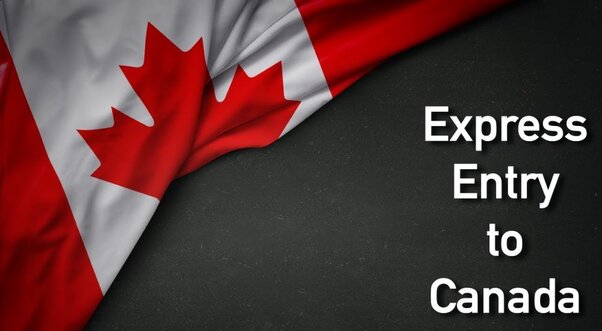Australia is a popular destination for skilled workers seeking employment opportunities in a thriving economy with a high standard of living.
The process of applying for an Australian work visa involves several steps and requires careful preparation. This comprehensive guide will help you navigate the application process smoothly.
Types of Australian Work Visas
Australia offers various work visas catering to different professional needs and qualifications. Understanding the types of work visas available is the first step in the application process.
Temporary Skill Shortage (TSS) Visa (Subclass 482)
The TSS Visa allows employers to address labor shortages by bringing in skilled workers on a temporary basis. It is divided into three streams:
- Short-Term Stream: For occupations on the Short-Term Skilled Occupation List (STSOL).
- Medium-Term Stream: For occupations on the Medium and Long-Term Strategic Skills List (MLTSSL) or the Regional Occupation List (ROL).
- Labour Agreement Stream: For workers sponsored by an employer through a labor agreement.
Skilled Independent Visa (Subclass 189)
The Skilled Independent Visa is a permanent visa for points-tested skilled workers who are not sponsored by an employer, state, or territory.
Skilled Nominated Visa (Subclass 190)
The Skilled Nominated Visa is a permanent visa for points-tested skilled workers who are nominated by an Australian state or territory.
Employer Nomination Scheme (ENS) Visa (Subclass 186)
The ENS Visa is a permanent visa for skilled workers nominated by their employer. It includes three streams:
- Temporary Residence Transition Stream: For workers holding a TSS Visa for three years.
- Direct Entry Stream: For workers who have never worked in Australia or only briefly.
- Labour Agreement Stream: For workers sponsored under a labor agreement.
Regional Sponsored Migration Scheme (RSMS) Visa (Subclass 187)
The RSMS Visa is for skilled workers nominated by an employer in regional Australia. It includes the same streams as the ENS Visa.
Step-by-Step Guide to Applying for an Australian Work Visa
1. Determine Eligibility
Each visa type has specific eligibility criteria. Common requirements include:
- Skills Assessment: A positive skills assessment in your occupation.
- English Proficiency: Demonstrated proficiency through accepted tests like IELTS, TOEFL, or PTE.
- Work Experience: Relevant work experience in your occupation.
- Health and Character: Meeting health and character requirements.
2. Choose the Right Visa
Select the visa that best matches your qualifications and job offer. Research each visa’s specific requirements and streams to determine the best fit.
3. Obtain a Skills Assessment
A skills assessment is mandatory for most skilled visas. It verifies that your qualifications and work experience meet Australian standards for your occupation. Assessment authorities vary by occupation, such as Engineers Australia or the Australian Computer Society.
4. Take an English Language Test
Proficiency in English is crucial for your visa application. Accepted tests include:
- IELTS (International English Language Testing System)
- TOEFL (Test of English as a Foreign Language)
- PTE (Pearson Test of English)
5. Submit an Expression of Interest (EOI)
For points-tested visas (Subclass 189, 190, 491), submit an Expression of Interest (EOI) through the SkillSelect system. Provide details about your skills, work experience, and qualifications. Your EOI will be ranked based on your points score.
6. Receive a Nomination or Invitation to Apply
For Subclass 190 and 491 visas, secure a nomination from an Australian state or territory. For Subclass 189 and 190 visas, wait for an Invitation to Apply (ITA) based on your EOI ranking.
7. Gather Supporting Documents
Prepare the necessary documents for your visa application. These typically include:
- Valid Passport: Ensure it is up-to-date.
- Skills Assessment Report: Proof of a positive skills assessment.
- English Test Results: Proof of language proficiency.
- Work Experience Documents: Employment references and pay slips.
- Educational Certificates: Degrees, diplomas, and transcripts.
- Health and Character Certificates: Medical exams and police clearances.
8. Lodge Your Visa Application
Submit your visa application online through the Department of Home Affairs website. Ensure all information is accurate and complete to avoid delays or rejections.
9. Pay the Visa Fees
Visa fees vary depending on the visa type and individual circumstances. Fees must be paid online during the application process.
10. Attend Health and Character Checks
Complete the required health examinations with an approved panel physician and obtain police clearances from countries where you have lived.
11. Await a Decision
Visa processing times vary. You can check the status of your application through your ImmiAccount on the Department of Home Affairs website. Processing times are typically faster for temporary visas compared to permanent ones.
12. Prepare for Arrival in Australia
Once your visa is granted, you will receive a visa grant notification with visa conditions and validity. Plan your move to Australia by arranging accommodation, understanding the local culture, and preparing for your new job.
Tips for a Successful Australian Work Visa Application
Ensure Complete Documentation
Incomplete or incorrect documentation is a common cause of delays and rejections. Double-check that all required documents are included and accurately completed.
Stay Updated on Immigration Policies
Australian immigration policies can change. Regularly check for updates to ensure you meet the latest requirements and criteria.
Seek Professional Advice
Consider consulting with a registered migration agent or immigration lawyer, especially if your case is complex. Professional guidance can help navigate the application process more efficiently.
Maintain Communication with Your Employer
If your visa requires employer sponsorship, keep in regular contact with your employer to ensure all sponsorship obligations are met.
Conclusion
Applying for an Australian work visa requires careful planning and adherence to specific requirements. By understanding the various visa types, preparing necessary documents, and following the steps outlined in this guide, you can enhance your chances of a successful application and a smooth transition to working in Australia.

